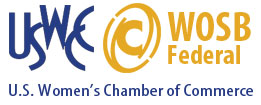
Because we think this is so vital to success as an employer, we’re going to walk through the key values of an Employer of choice. But first, let’s talk about the definition of the term.
So what exactly is an Employer of Choice?
Put simply, an Employer of Choice is an organization that everyone already wants to work for. These are companies with such sterling reputations in the industry that employees are naturally drawn to them. Think of Apple or Google – these are the companies that people are working hard to get into. Job seekers who can put one of these companies on their resumes are going to have a leg up just for mentioning that they worked there.
To put this another way, an Employer of Choice is a person’s top choice for their career goals. “If only I worked at this company,” people say, “My career would really take off.” These are companies people fantasize about working for.
Surely, you can already see why this is such a good thing for a company. Instead of having to spend time and money to find the best talent possible, the best talent in the industry comes straight to you, with you as their top pick for where they want to put their talents to use.
What are the key characteristics of an Employer of Choice?
The key values of an Employer of Choice are:
- Consistency
- Creativity
- Competitiveness
- Innovation
- Flexibility
- Adaptability
So let’s take a look at each one.
Consistency
Consistency is a broad idea that encompasses many different facets of an organization, but in general terms, consistency means you’ll be the same tomorrow as you were today.
Of course, this doesn’t mean you’ll sacrifice innovation (which we’ll get to in just a bit) for sameness. It means that employees can feel secure working for you. Every employee knows what their expectations are. You don’t tell them their responsibilities one day, then expect them to adapt to a completely new set of expectations the following day. You show consistency in what you expect.
This goes doubly for the way you treat individual employees. Two employees in the same role should have the same expectations, when possible (there are extenuating circumstances, surely, in which one employee might require special treatment, but in a normal day-to-day operation, your employees should be treated as equals).
Perhaps more importantly, you need to be consistent in your values. If you value integrity, you can’t reward dishonesty. If you value loyalty, you can’t reward disloyalty. If you value innovation, you can’t reward laziness.
When you make rules for your employees to follow, those rules should be in service of your core values. For example, if you cite “innovation” as a core value, then shoot down every new idea that anyone brings to you, you’re undermining your own message. You’re being inconsistent.
Creativity
We think people mostly accept on principle that creativity is a positive in any work environment. However, creativity tends to die before it gets to the implementation stage.
When someone steps into your workplace, does it feel different? Is there something exciting about the energy in the room? Do people automatically feel inspired? These are questions you must consider when fostering a creative work environment.
Brainstorming sessions should be fun rather than an exercise in saying “no” as many times as you can in an hour. Décor should be unique to your company rather than looking like every other company you’ve been to. Your process should have a flow to it – allow on-the-fly adaptation rather than stringently sticking to a rulebook (if this sounds like it contradicts the idea of consistency, it actually doesn’t – as long as you’re consistent in what you allow here).
Too many workplaces feel dull and draining. Create an environment people want to work inside of, and you’ll have an automatic advantage over companies that don’t do this.
Competitiveness
We should be careful with this one, because people often misinterpret it. When we say competitiveness, we mean that you should foster an environment where people are driven to succeed. When a fellow employee accomplishes something, it should inspire other employees to accomplish something even greater.
What we’re not talking about is the “Always be closing” scene from the 1992 film Glengarry Glen Ross. The competition should drive people to do better because they want to, not because they feel threatened. We know that’s a fine line to walk sometimes. The easiest rule of thumb here is to focus on positive reinforcement rather than negative reinforcement.
Additionally, your company should be competitive in the industry. You shouldn’t think of bigger companies as being unreachable; you should consider them as your competitors. What do you have to do to compete with the biggest player in your sphere? That’s something you should always be thinking about.
Too many companies shoot themselves in the foot right away. “We’re not Google, and we’ll never be Google,” they say. Those companies might be successful in small ways, but they’re not going to become an Employer of Choice by keeping their ambitions so small.
Think big. It’s a monumental task, but who else is going to achieve it if not you?
Innovation
Innovation goes hand-in-hand with competitiveness. Instead of following what everyone else is doing, find the places where your biggest competitors are the weakest and try to improve in those areas. Think ahead rather than purely responsively. Try to be the company that solves problems before they arrive rather than a year or two after. Don’t ever be the company that waits to react to a challenge so they can watch what their competitors do and then do the exact same thing.
The reason innovation and consistency don’t contradict one another is that innovation is a consistent movement forward. If you’re consistently innovating, you’re both consistent and innovative, and that’s not a contradiction at all.
Flexibility
If your company is flexible, it means you can bend where others would break. Flexibility is what balances out consistency.
One great example is companies that give employees the option to work from home. We’ve talked over the benefits of working from home already, so we won’t get into that too deeply here (you can read our full article on that if you’d like, though). We bring it up because some employees would rather work from home, while others would rather be in the office. If you offer the choice, you’ll retain both types of employees. If you only offer one, you’re risking losing good employees who prefer the other.
You can see how being flexible in just that one instance makes your organization a more desirable place to work. Think about all the other ways you can be flexible to cover a broad variety of special needs and preferences. If you want a top-notch workforce, you need to be flexible.
Adaptability
Adaptability is the end goal of flexibility. The reason you want to be flexible is because it allows you to adapt to new circumstances. If you’re already practicing flexibility and innovation, adaptability will come as a natural result.
If your current company structure is facing existential problems, change it. Adapt to the world as it exists right now rather than as it existed a decade ago. This is a challenge, but any organization must undertake it if they truly want to become an Employer of Choice.
All of these values work together
At this point, it’s probably clear how all of these values support each other. Being consistent and innovative means you’re adaptable. If you’re adaptable, you will maintain a competitive edge. If you’re adaptable and creative, you’re going to come up with solutions that no one else does to problems they might not even know they have.
If you can master all six of these values at the same time, you’re on your way to becoming an Employer of Choice.
We know this isn’t easy. It requires strategy. It requires data. And most of all, it requires hard work. But we believe you’re capable of becoming an Employer of Choice, and we hope this conversation helps you rise to the occasion.

